Physics
Fox
Summary
- Your eyes work similarly to how cameras work: light goes through a wide hole (called the pupil), which is focused by a lens. An image forms on the inside of the eye opposite the pupil (called the retina).
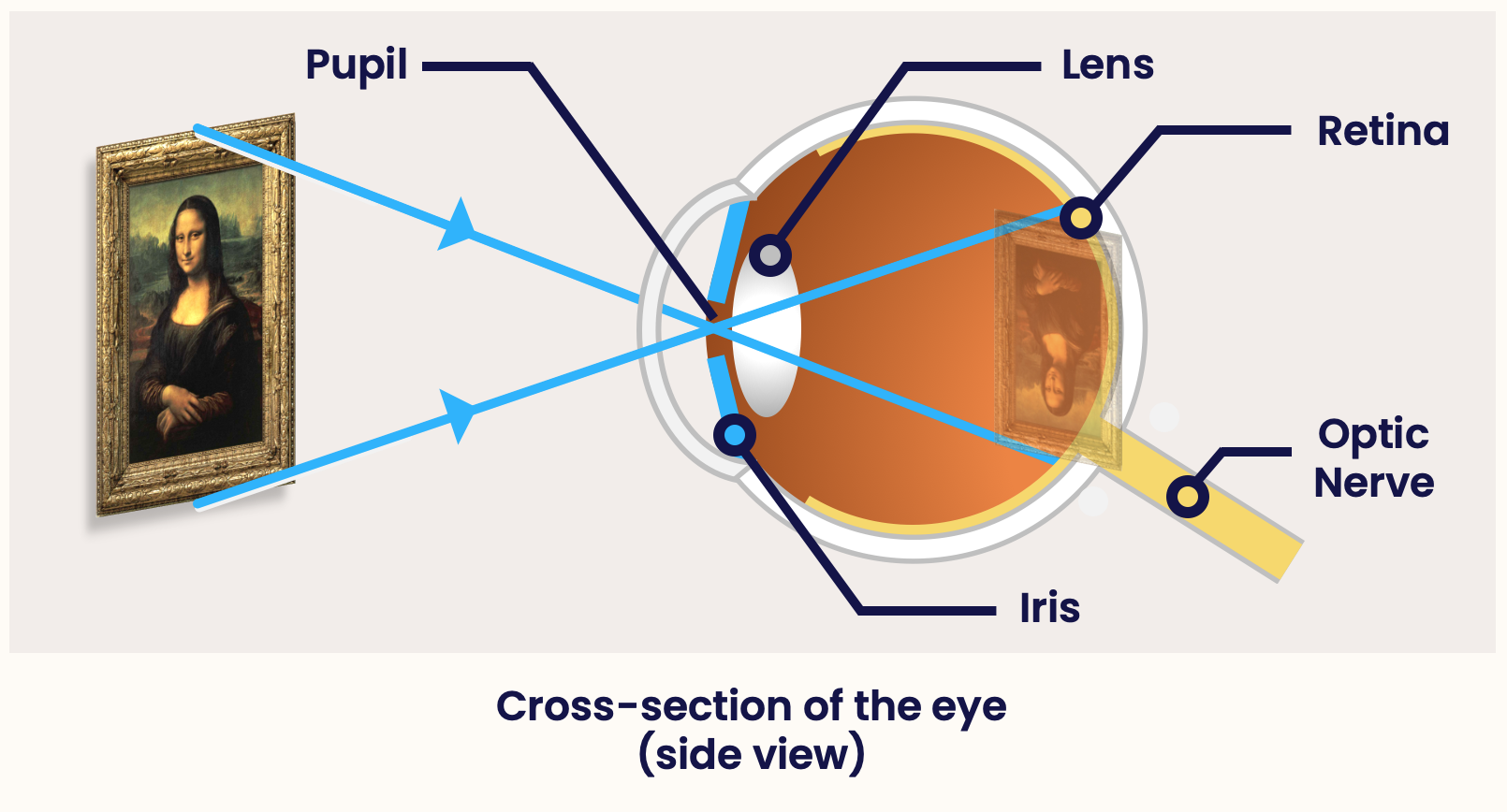
- The retina detects light with millions of biological cells, called rods and cones.
- Rods can only detect the amount of light hitting them. (So someone with only rods would see the world in black-and-white.)
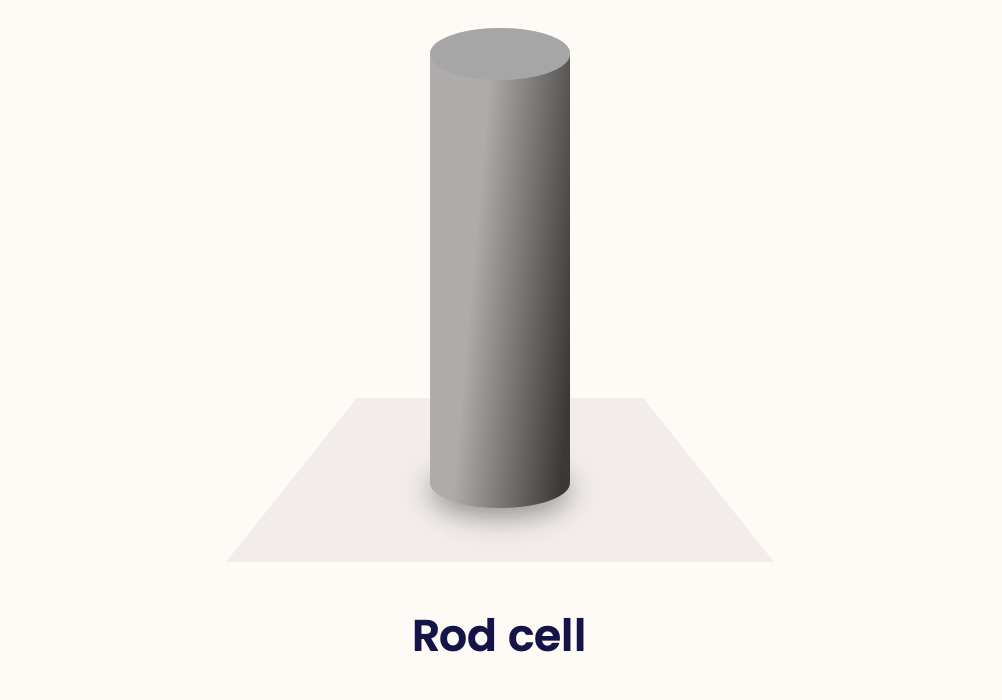
- Cones are used to detect the colour of light. There are 3 types of cones: one detects red light, one detects green light, and one detects blue light.
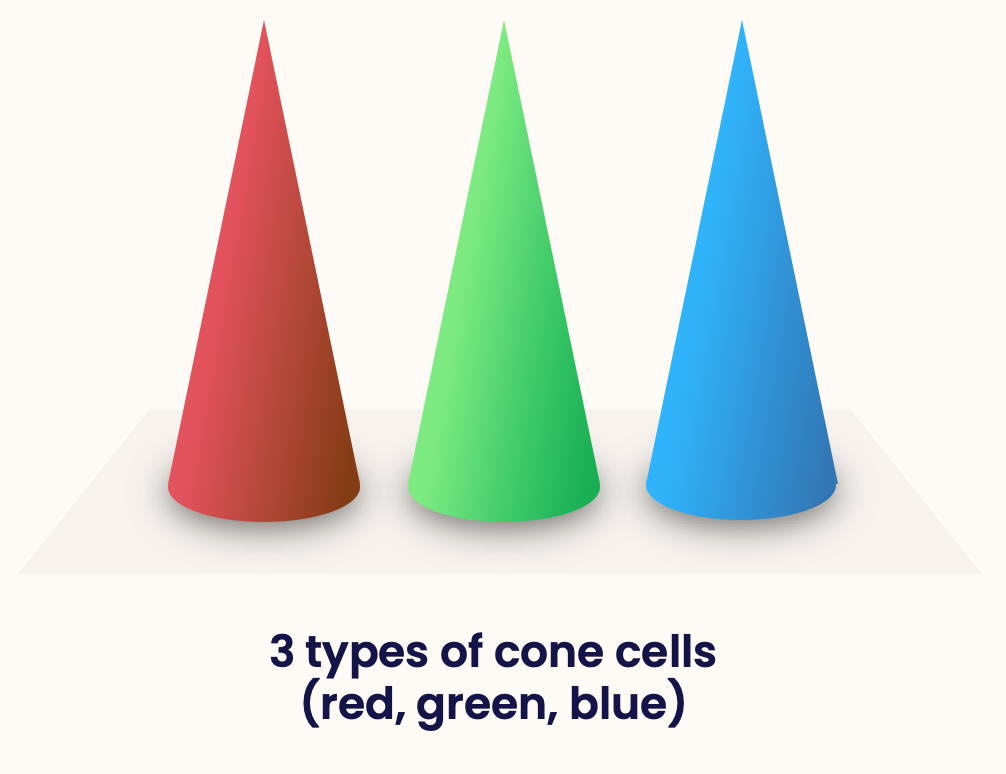
- Other colours of light stimulate more than one type of cone (e.g. orange light stimulates both red and green cones).
- The signal from the rods and cones is sent down the optic nerve to the brain.
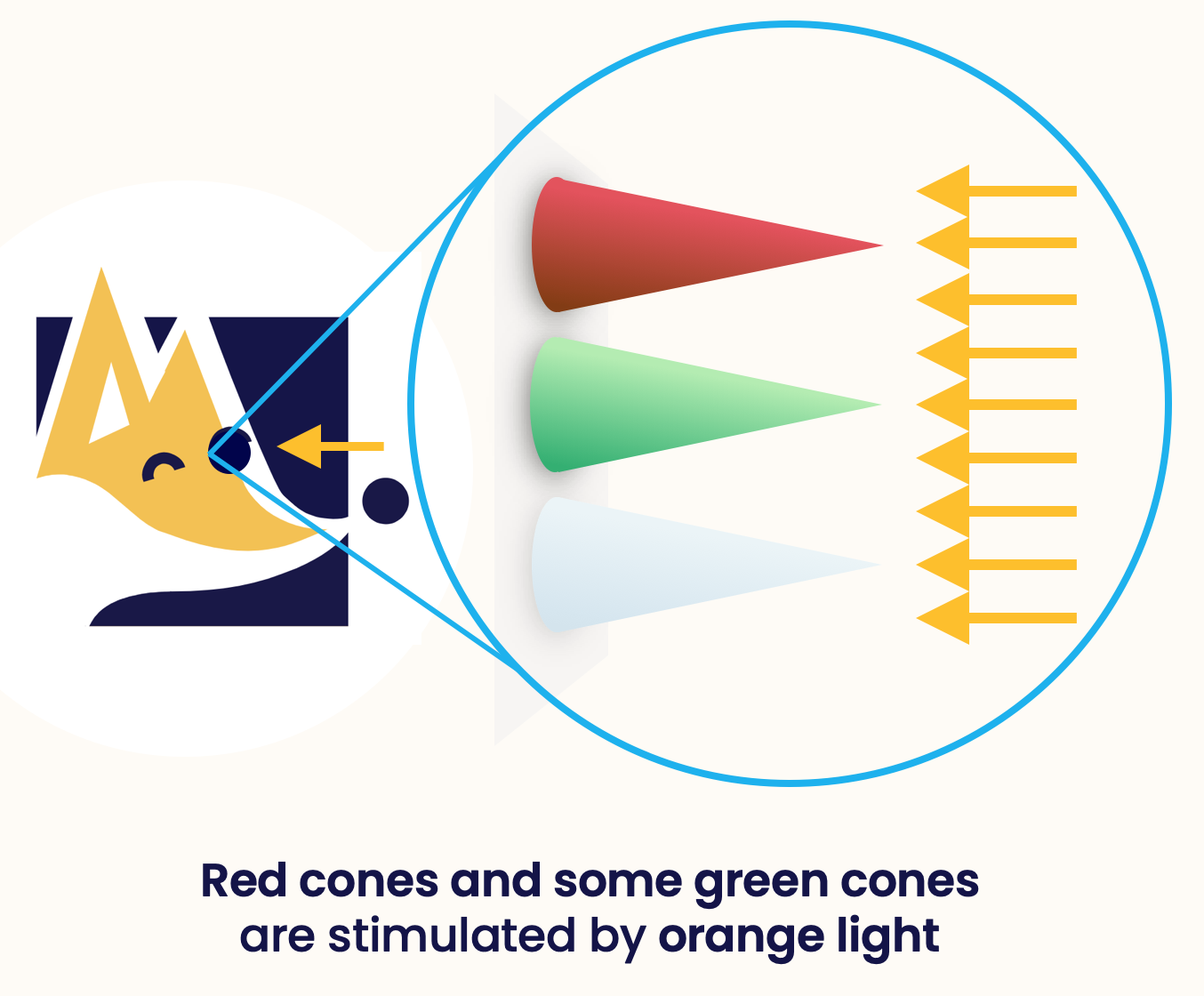
Open up your eyes, open up your ears
Get together and make things better
By working together
As you read this, light is going into your eyes. Your eyes are very accurately finding out the colour and brightness of light that is going into it. How are your eyes doing this?
The path light travels through the eye is quite similar to how it travels through a camera.
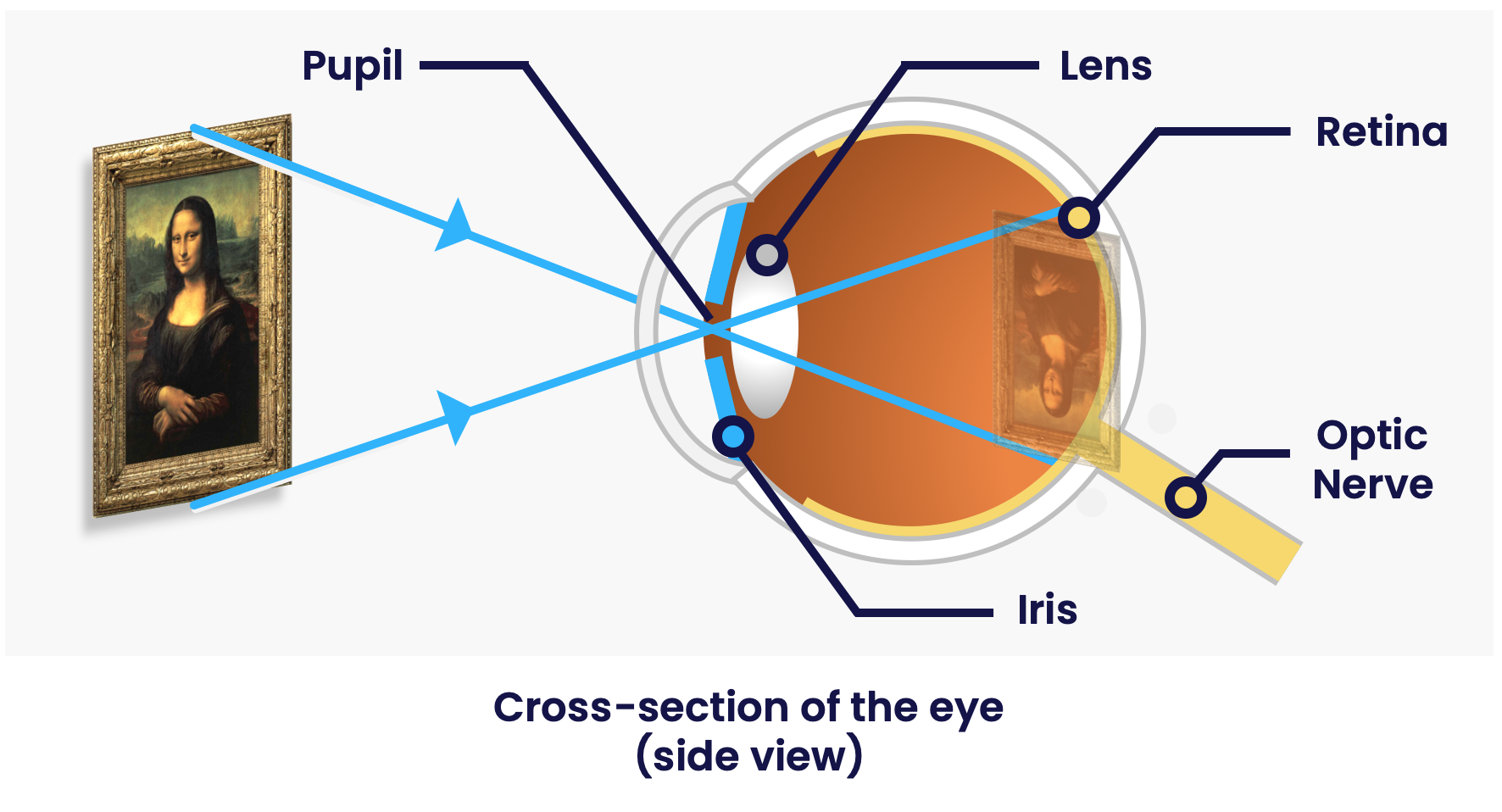
First, light goes through a small hole (called the pupil). The light is then focused by a lens (otherwise everything would look blurry). An image forms on the inside of your eye opposite the pupil (called the retina).
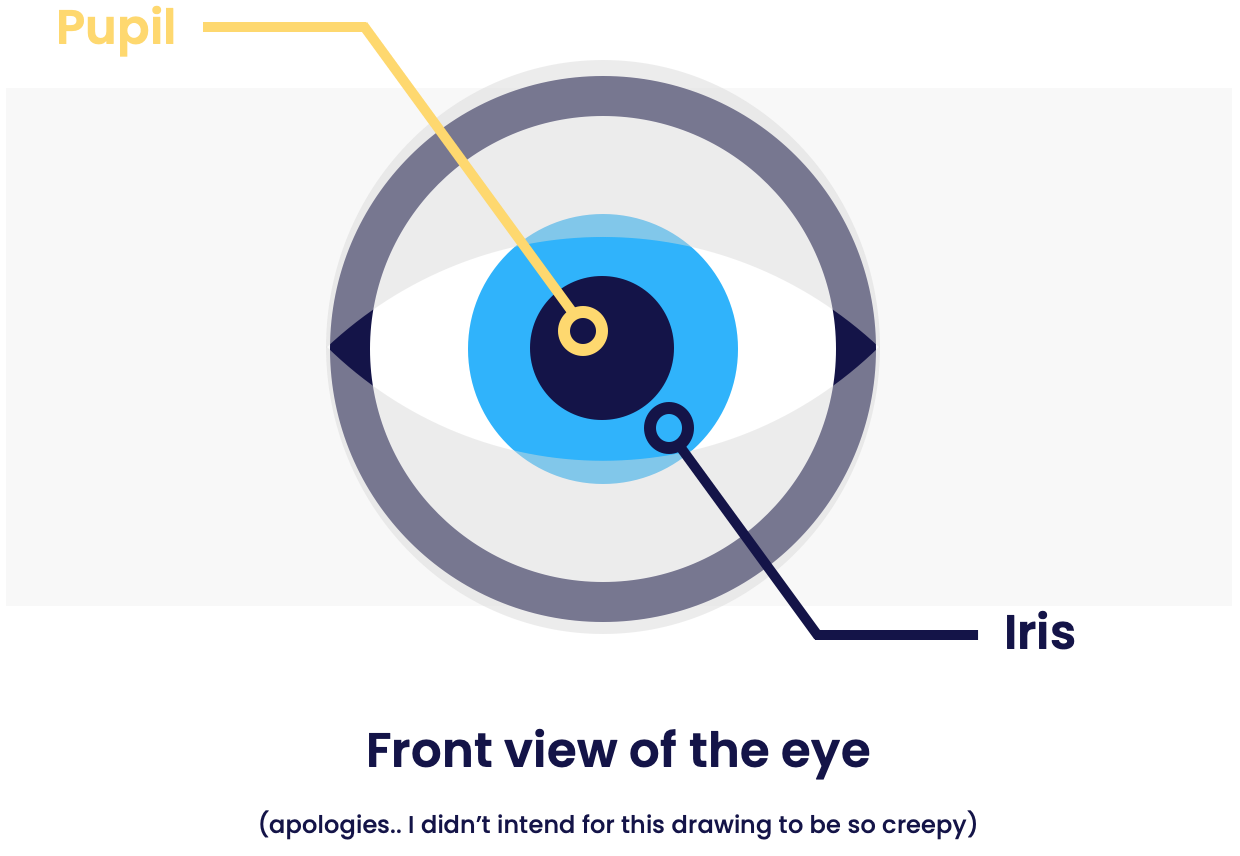
The amount of light that gets into your eyes depends on the how large your pupils are. Your pupils will automatically shrink if you go somewhere bright (to let less light in), or enlarge if you go somewhere dark (to let more light in). You can test this yourself by closing your eyes for a few seconds, then looking at your eyes in a mirror — your pupils will suddenly get smaller.)
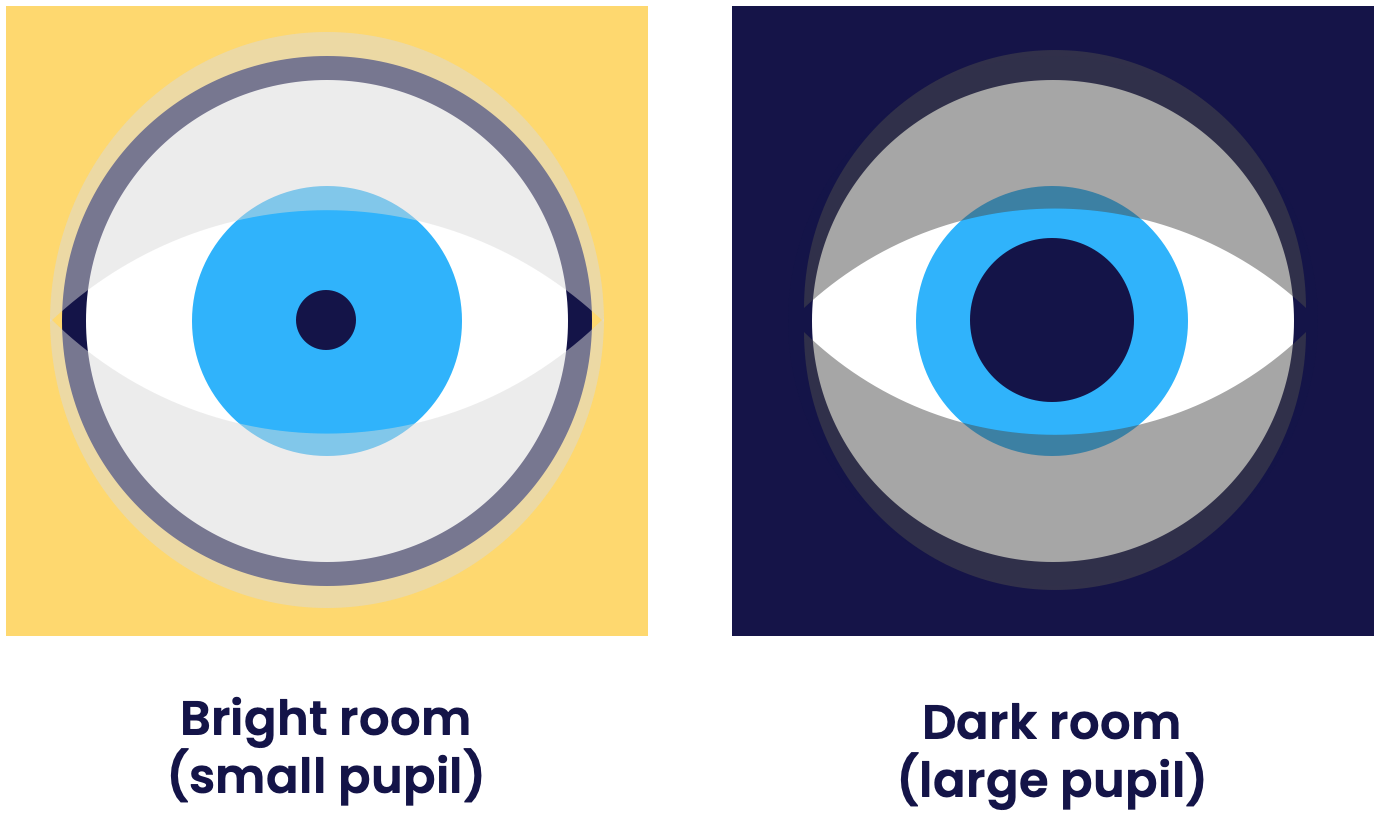
The pupil size is controlled by muscles in the iris, the ring-shaped part of your eye. (NB: Your ‘eye colour’ is the colour of your iris!) This is very similar to how the aperture size of a camera can be changed to let more or less light in.
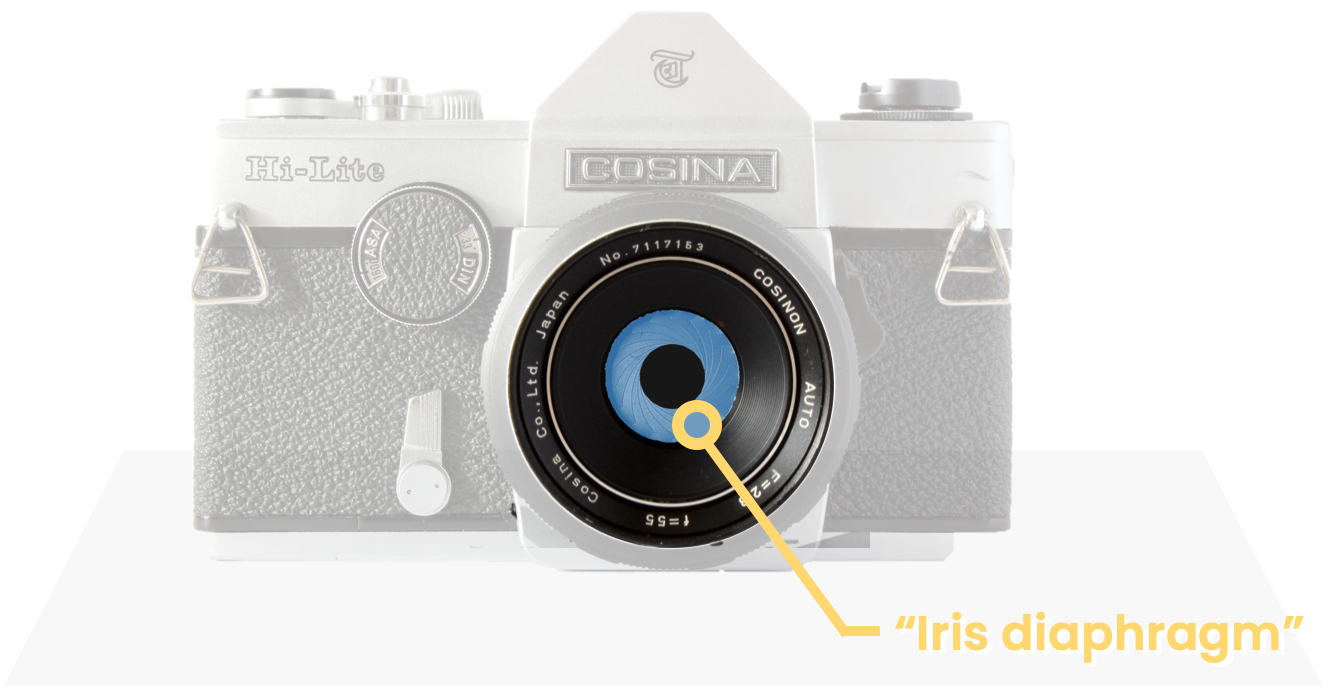
If you try and look somewhere far away, the image goes from blurry to clear. This is because muscles in your eye will slightly stretch your lens, putting distant objects in focus. This is similar to how a photographer changes the focal length of a camera to focus on objects further away.
The retina contains millions of biological cells that detect the incoming light. These cells are called rods and cones.
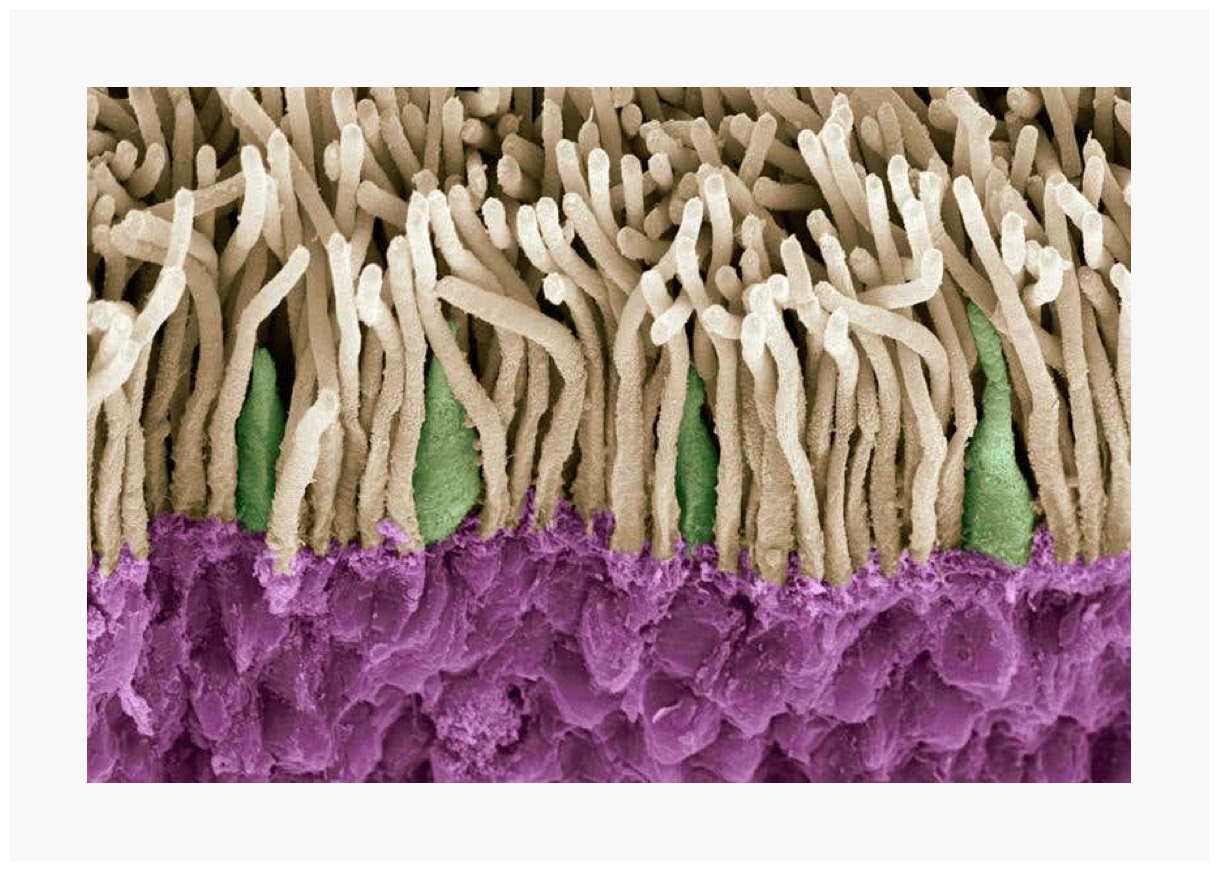
Most of the cells used to detect light are called rods, named for their long, cylindrical shape:
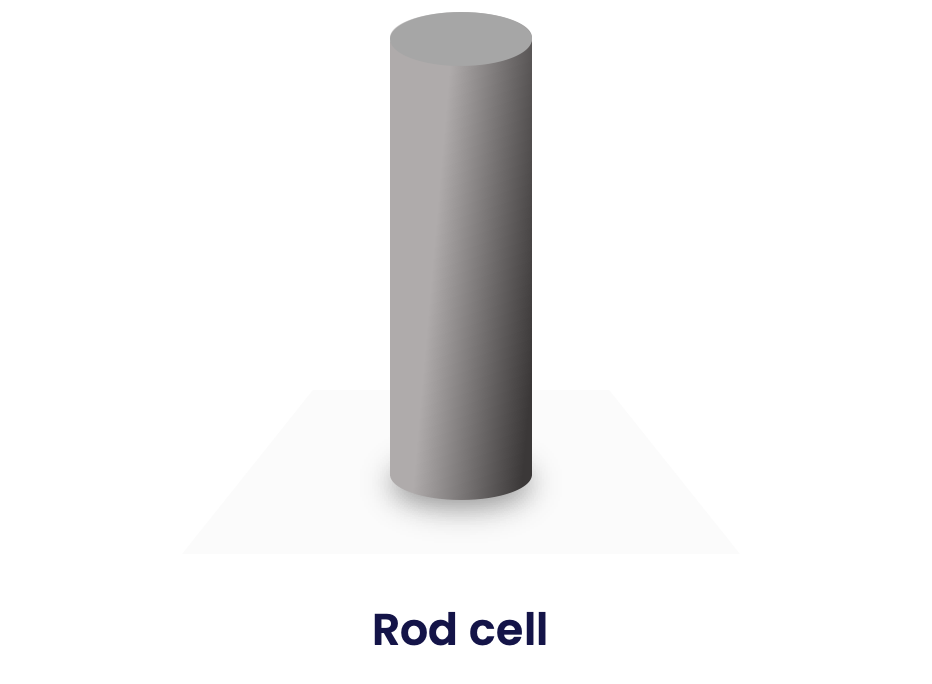
There are around 120 million rods in each eye. Rod cells are more sensitive than cone cells, but rods can only detect the amount of light hitting them. So someone with only rods would see the world in black-and-white.
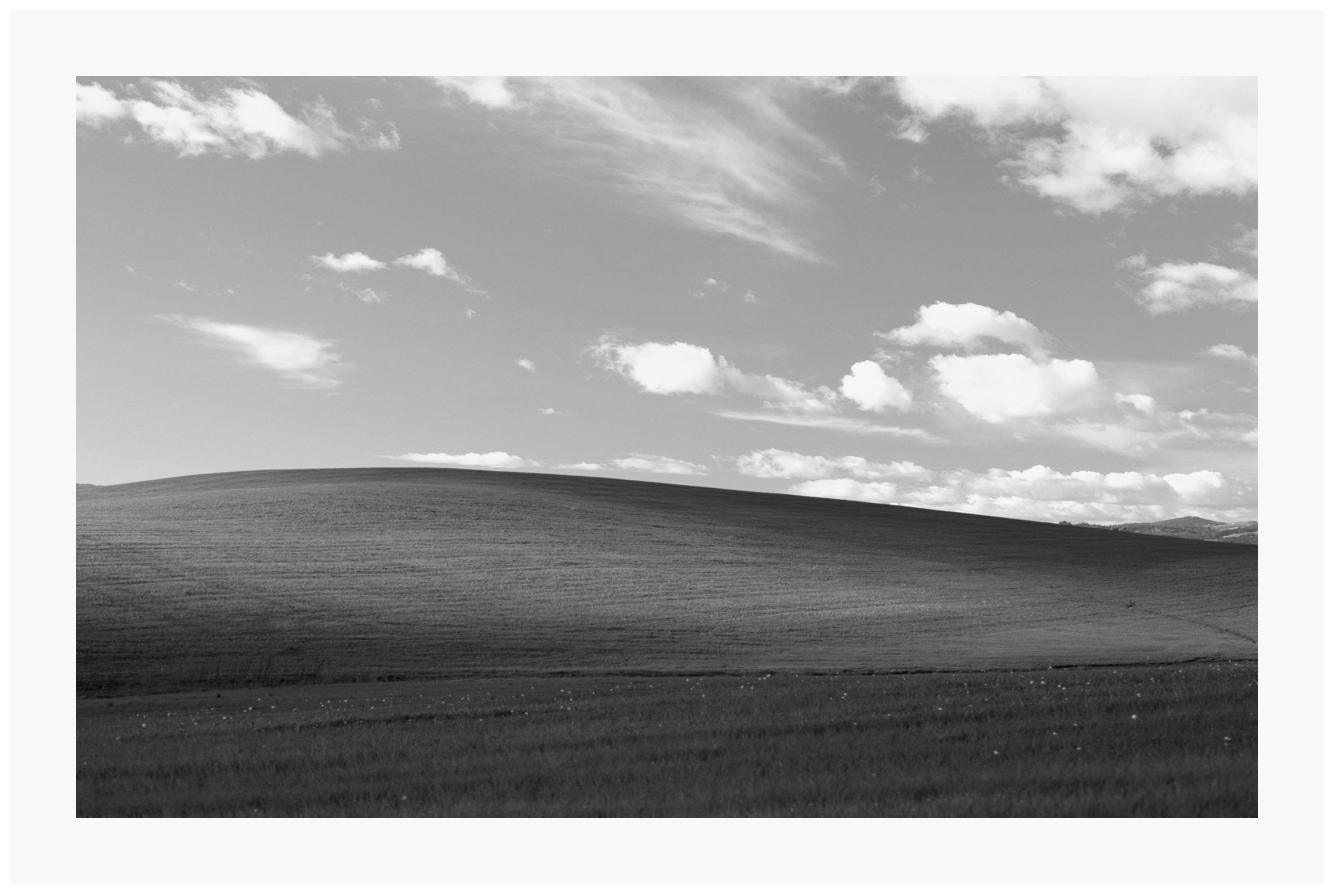
The other type of cells used to detect light are called cones, named after their conical shape:

There are far fewer cones than there are rods, “only” about 6 million of them. Unlike rods, cones can detect the colour of light hitting them.
In the human eye, there are 3 types of cones: one detects red light, one detects green light, and one detects blue light.
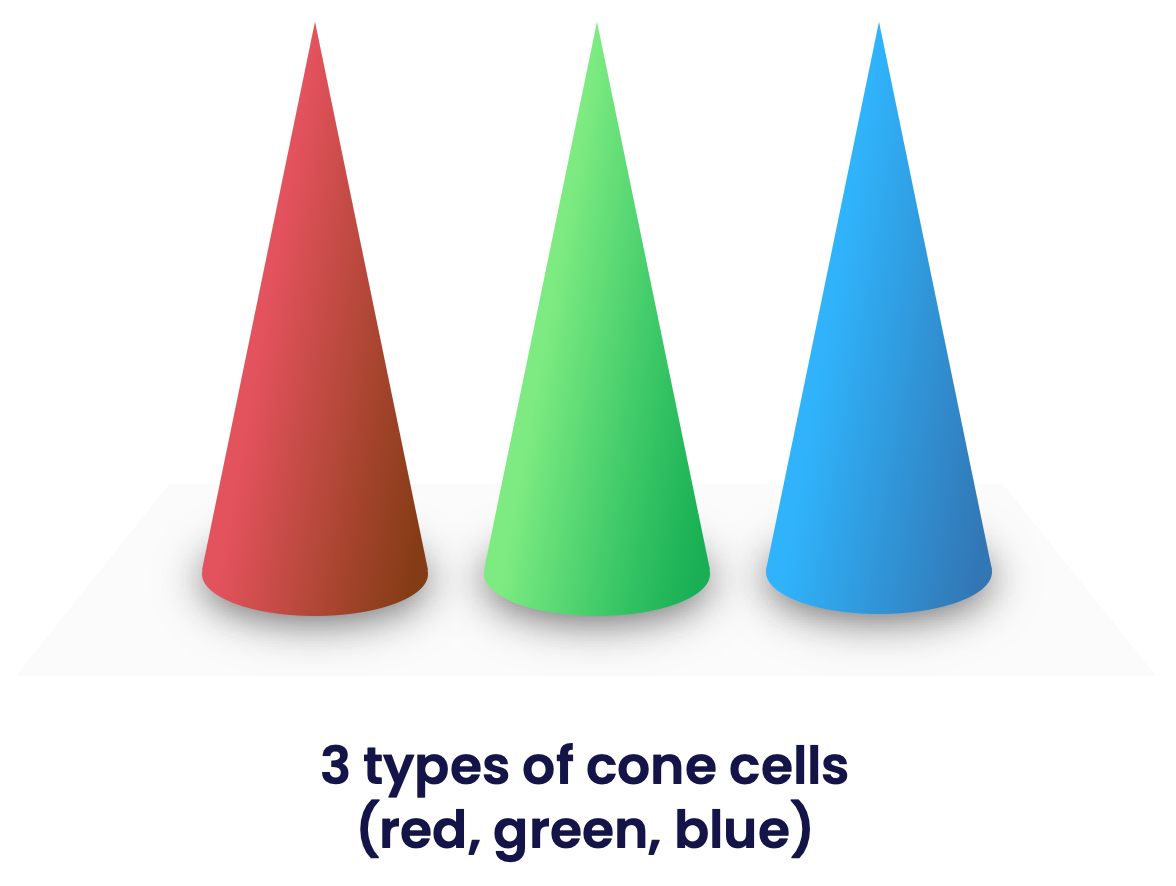
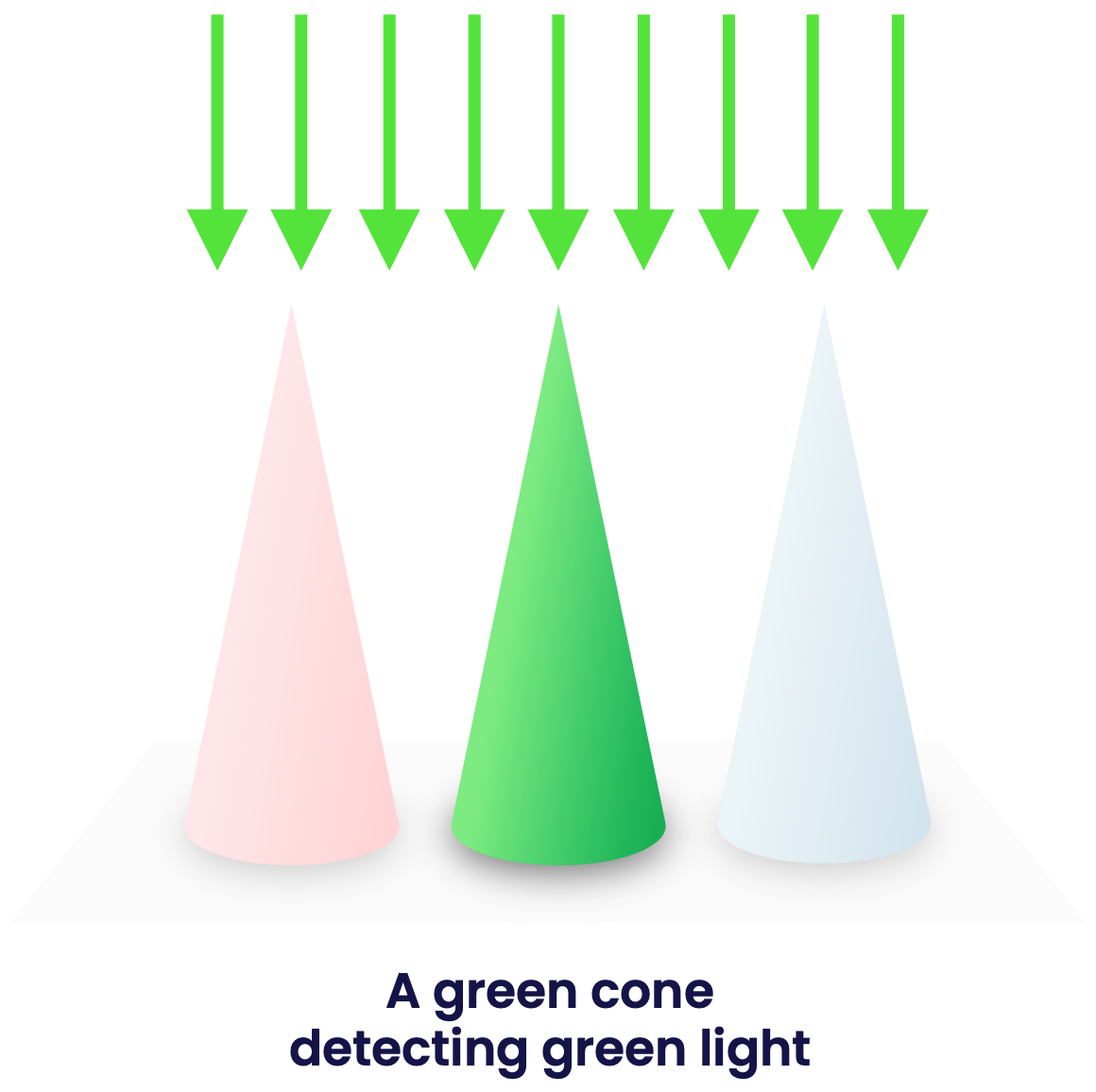
This might seem strange — there are infinitely many colours of light, so how come our eyes can only detect 3 of them?
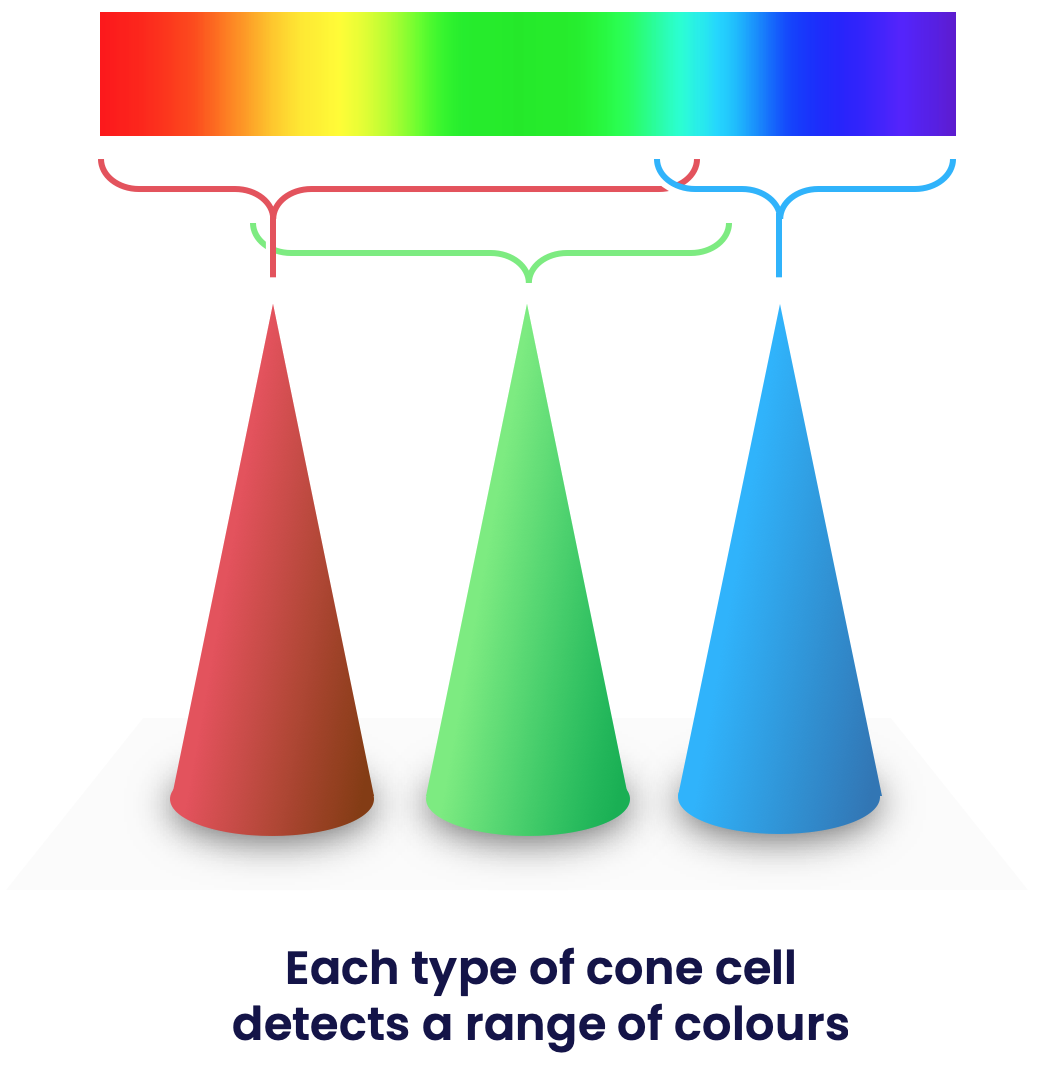
It's better to say that cones can detect red-ish light, green-ish light, and blue-ish light. An inbetween colour (e.g. orange) will be detected by more than one type of cone (e.g. both red and green). The brain calculates which colour is actually there from the amount that each cone is stimulated.
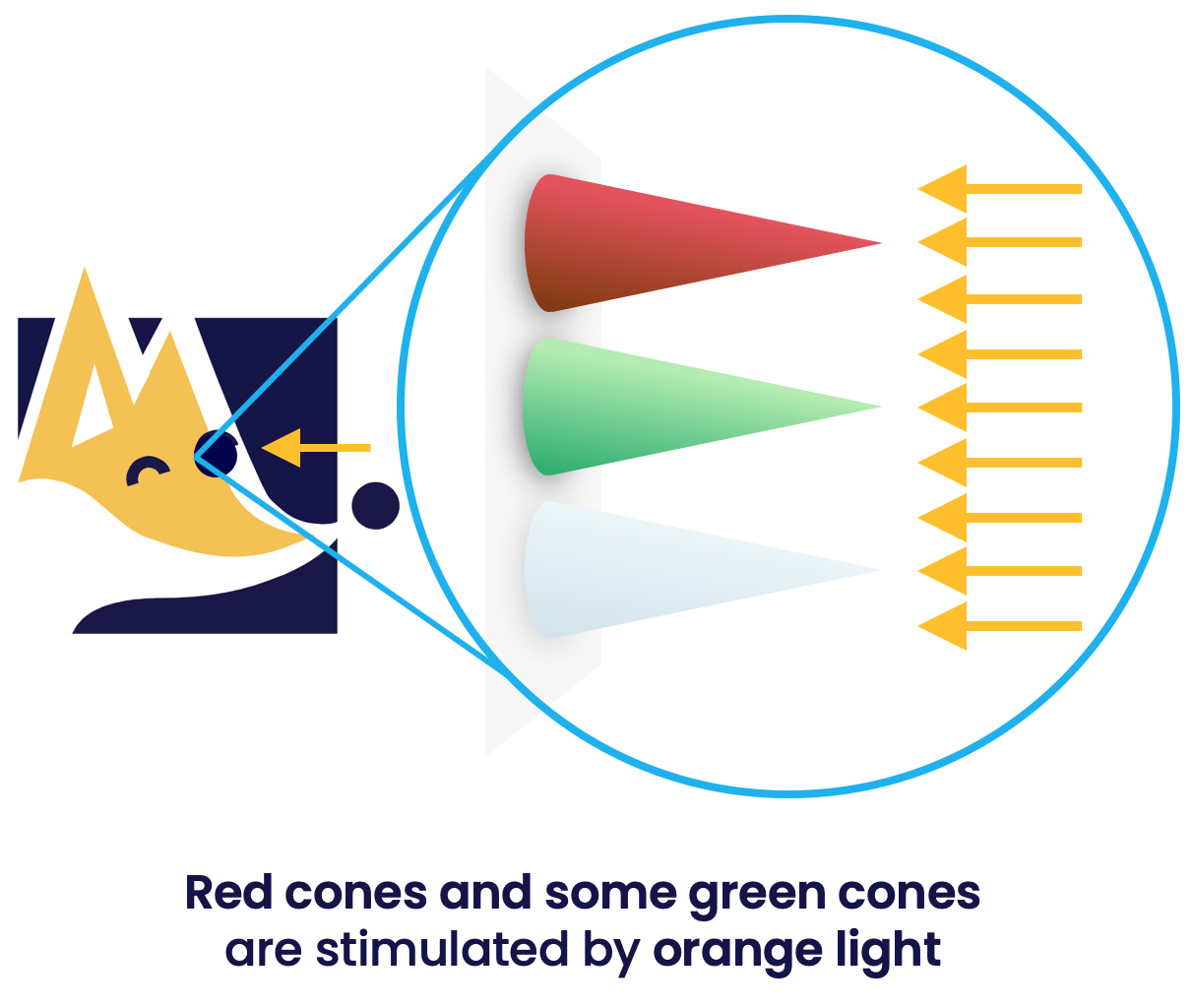
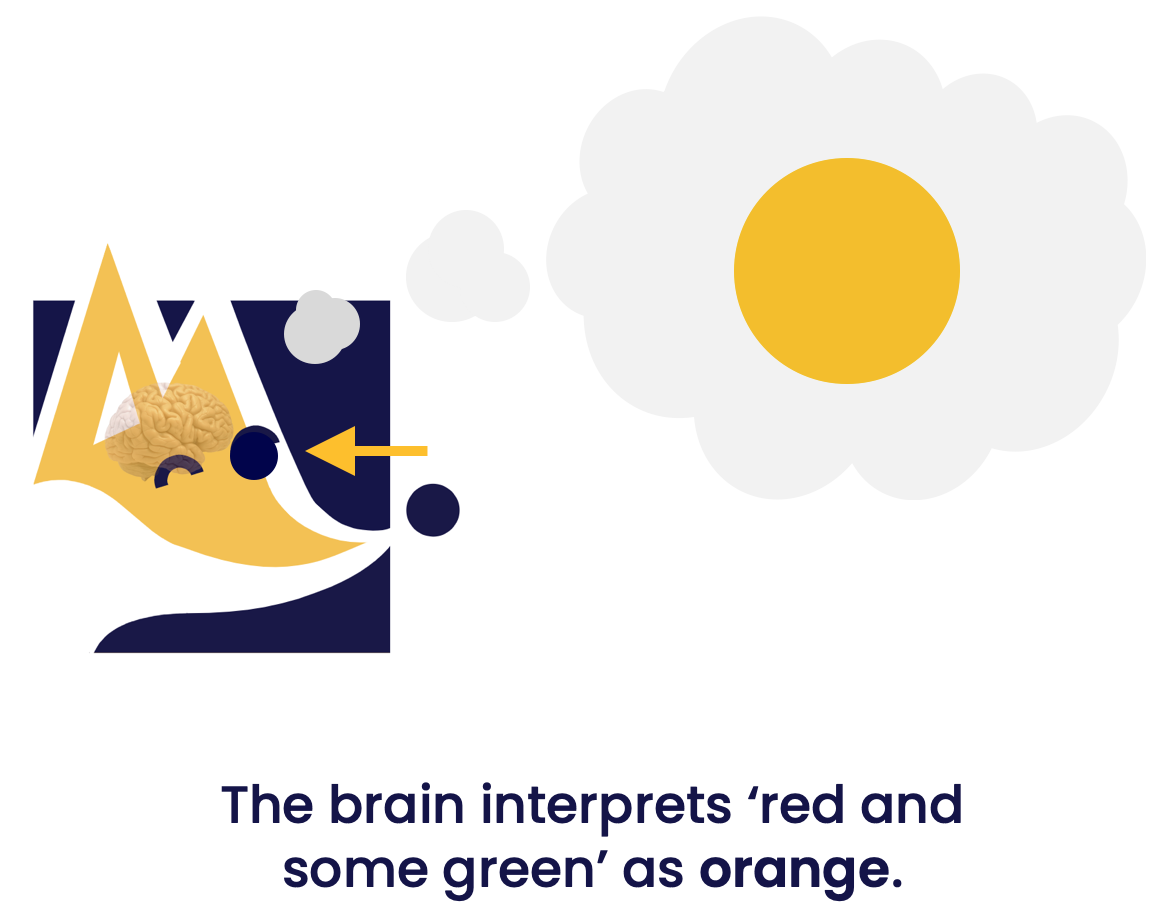
This is why, in physics, we consider red green and blue (RGB) as the three primary colours. Any colour we like can be created from a combination of these three (e.g. to get this orange colour, your screen puts red and green light very close together).
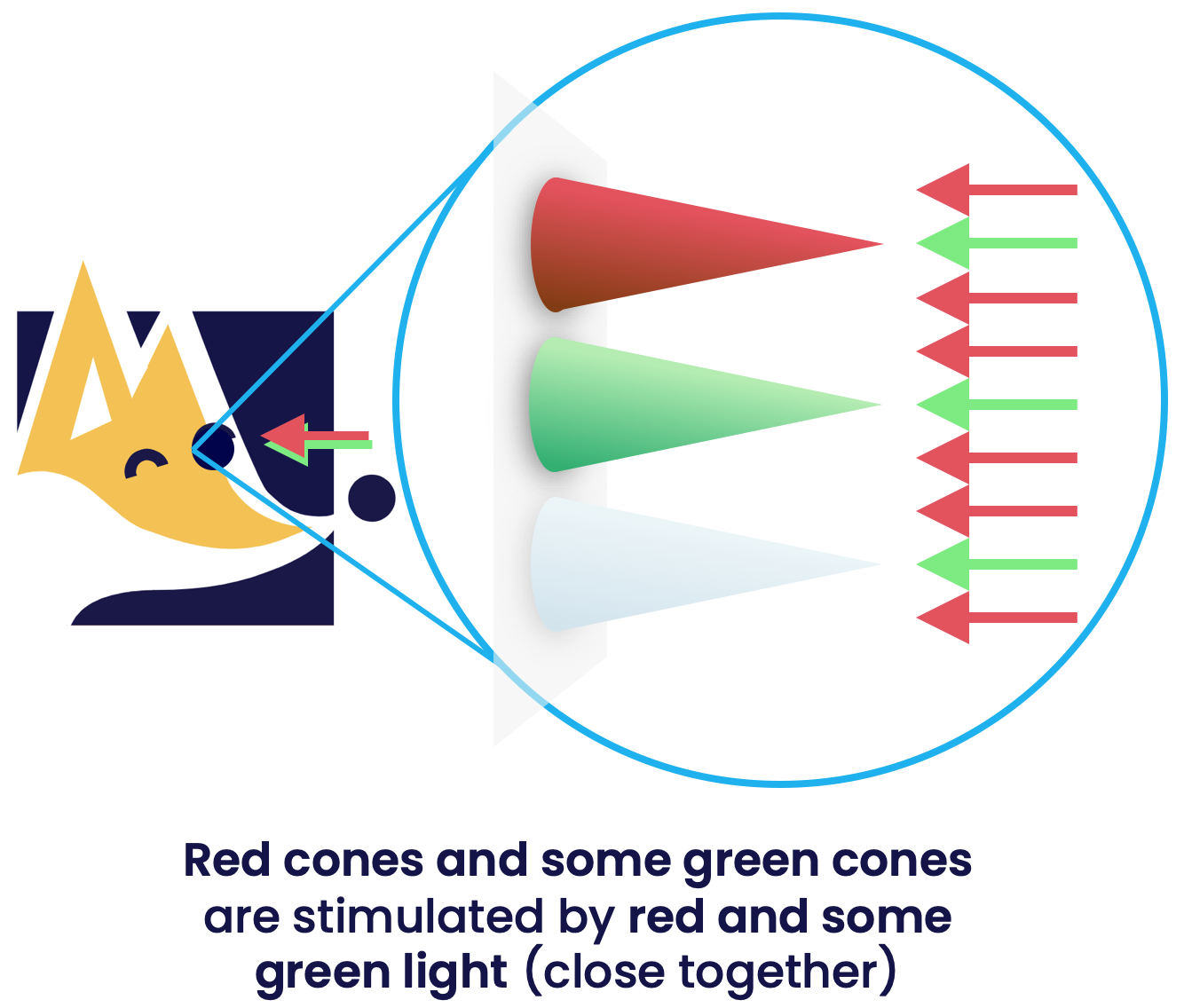
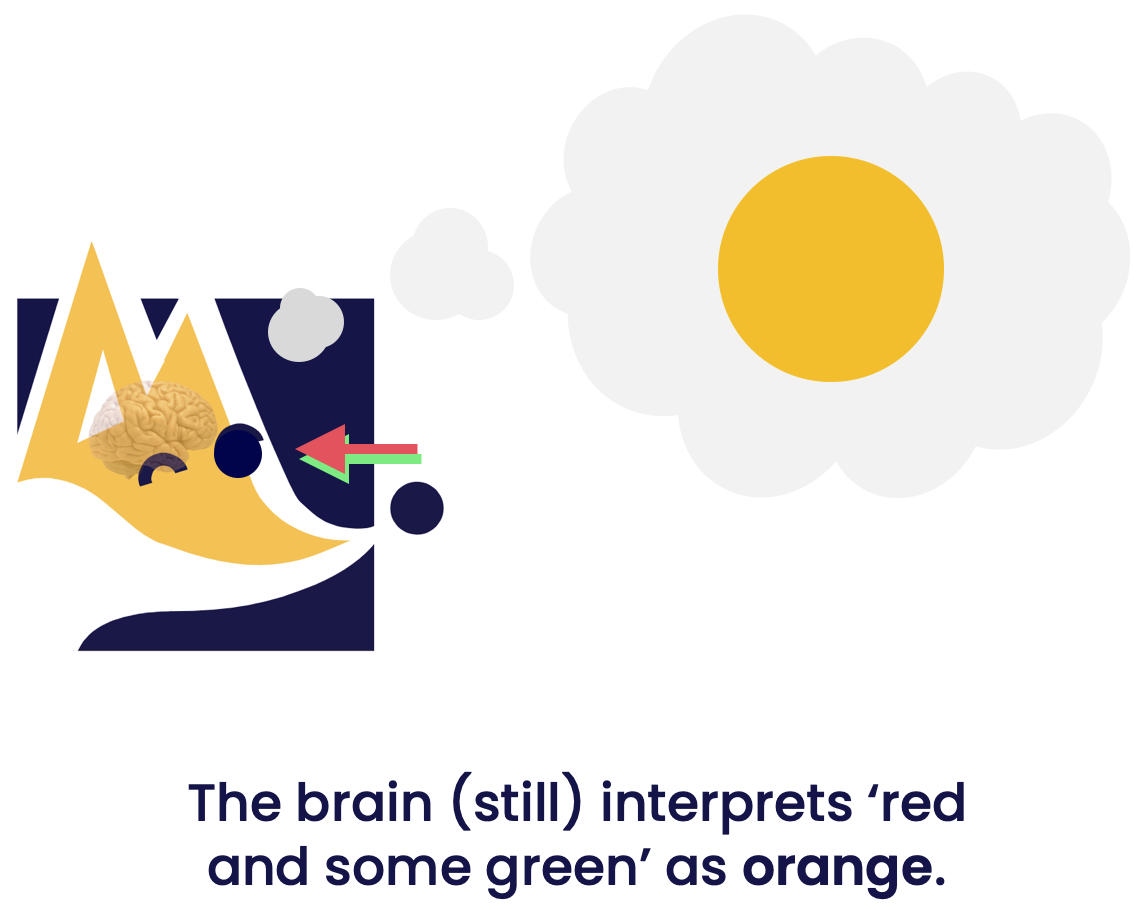
Cones only work when there is enough light. This means when it is dark enough, only your rods work. This explains why, in a very dark room, you can only see things in black and white!
Most of the cones are within a small dip in the retina called the fovea. This allows for incredibly sharp vision in the centre of your vision. Anything outside this small region is actually quite blurry. Of course, you knew this already — it's why you need to keep moving your eyes in order to clearly read each word in this sentence.
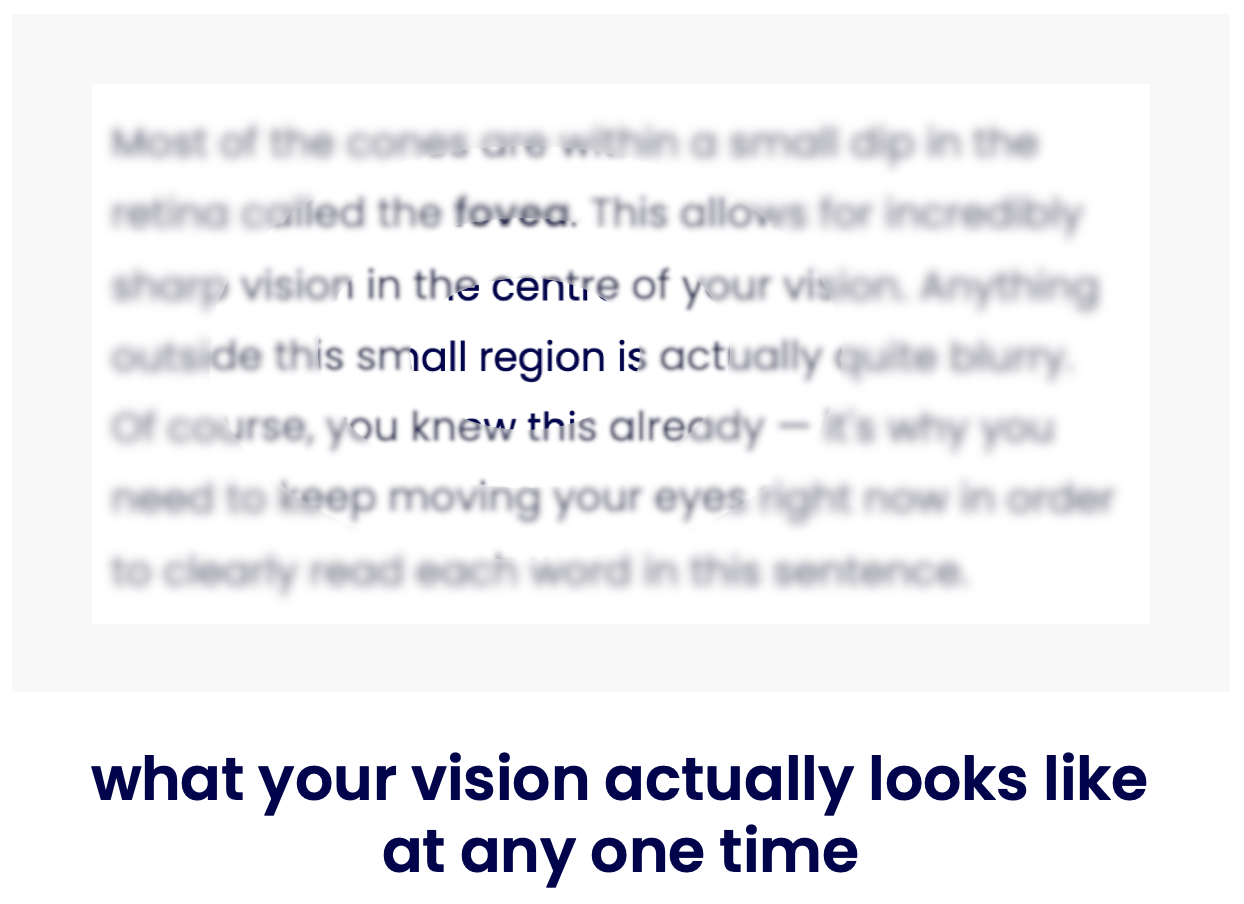
We now know quite a lot about light. Which is impressive, given we still don't know what it is! What makes light bright or dim? What makes light different colours? We'll find out next year, though there is a clue in the chapter title.
Remember how Nature is matter, energy and forces? We know a bit about matter and energy now, but we still don't know what forces are! Let's learn about them now...
“By the way, which one's Pink?”
Pink is not a colour of light.
You do not see pink when splitting white light in a prism. You cannot make a pink laser. You do not see pink in a rainbow, despite what the song claims (while telling you to “sing everything you see”, the hypocrites).

But pink obviously is a colour! So what's going on?
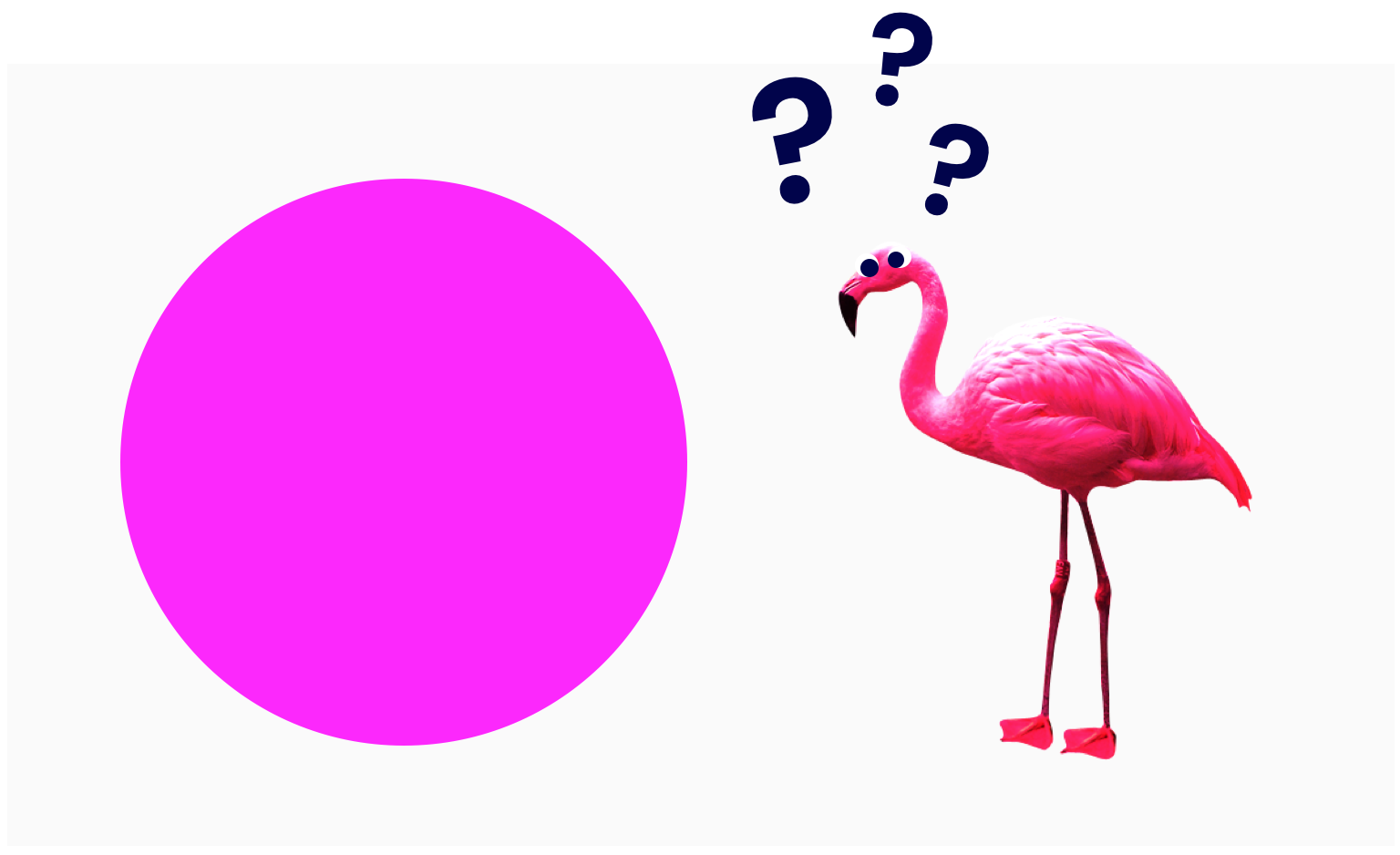
Recall how each type of cone can detect range of colours, as shown on this diagram:

Note that there is no colour of light that stimulates the red and blue cones, but not the green cone.
However, we can trick our brain into seeing this non-existent colour of light by combining red and blue very close together. This colour is pink.
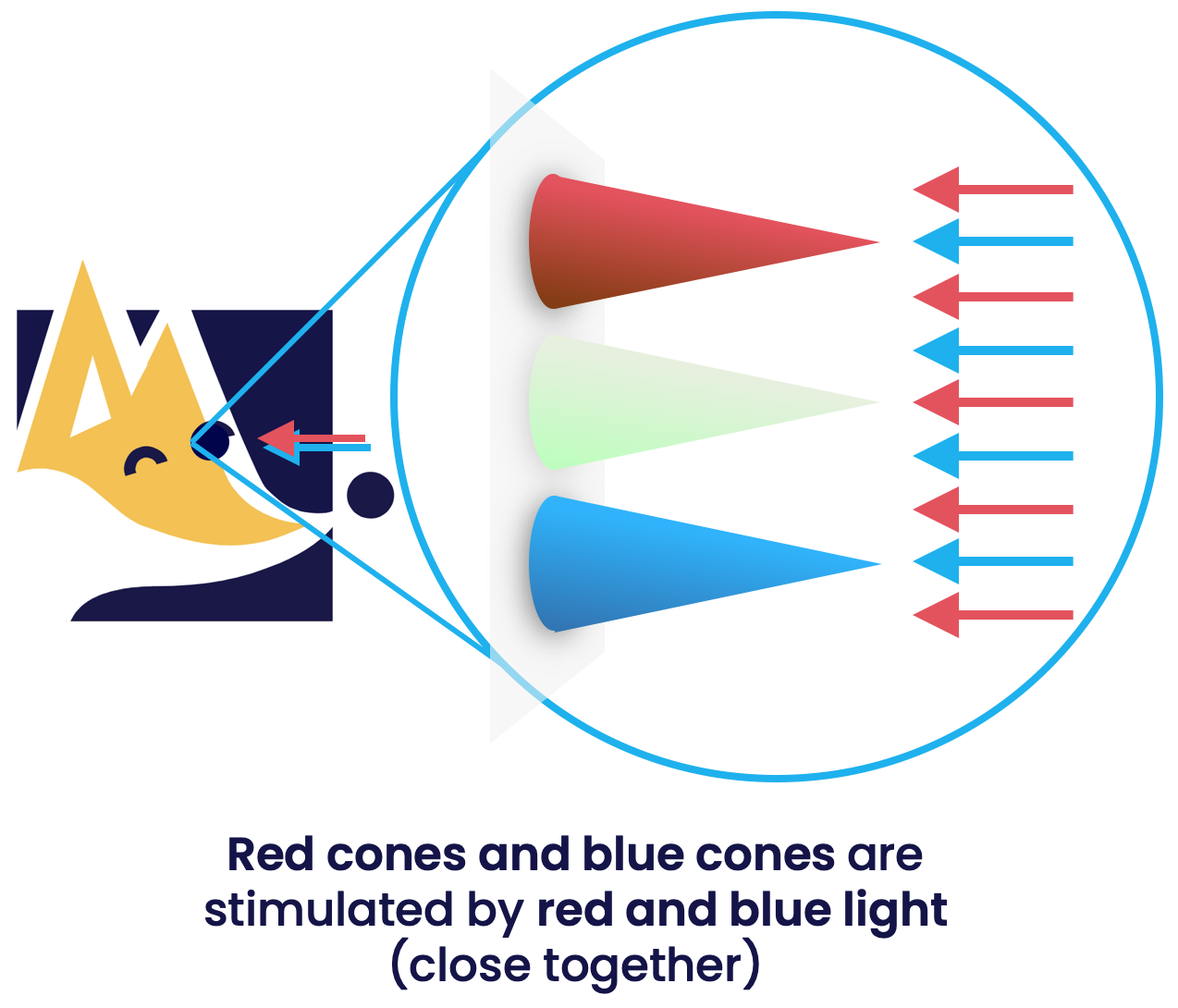
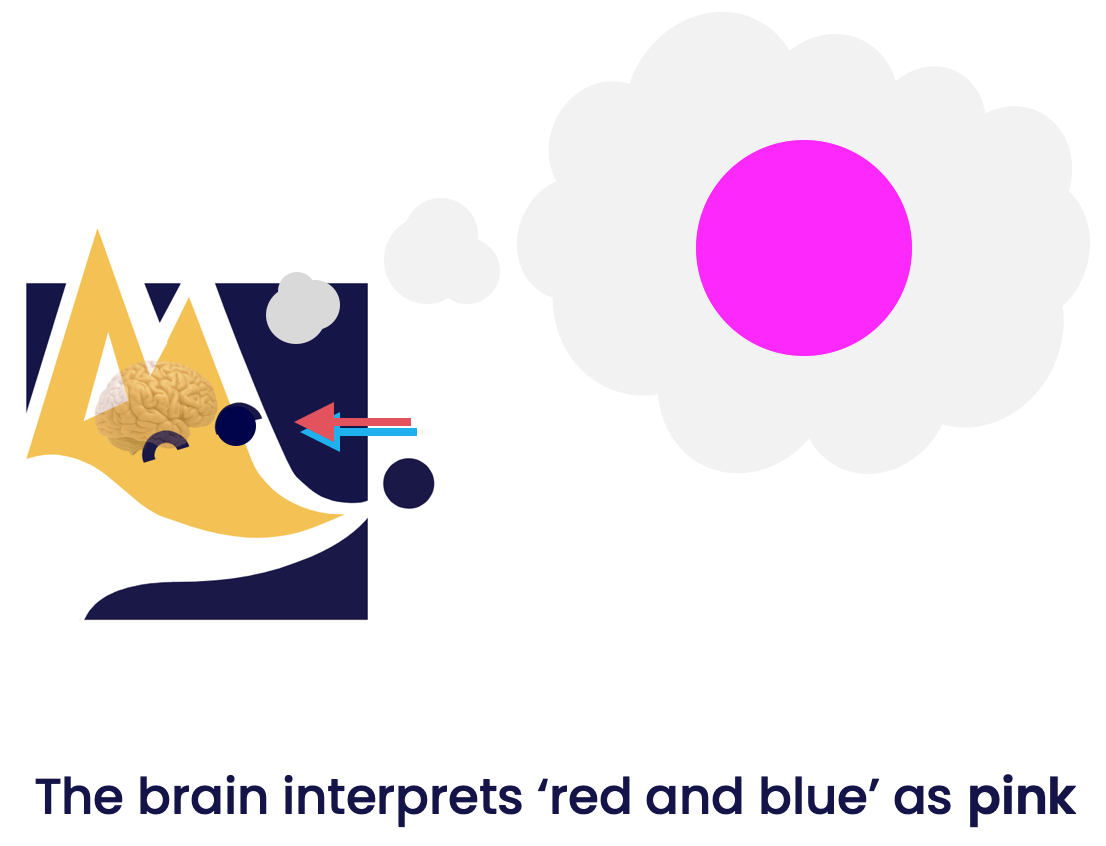
By inventing the colour pink, our brains build a bridge from one side of the colour spectrum to the other — turning it into the colour wheel.
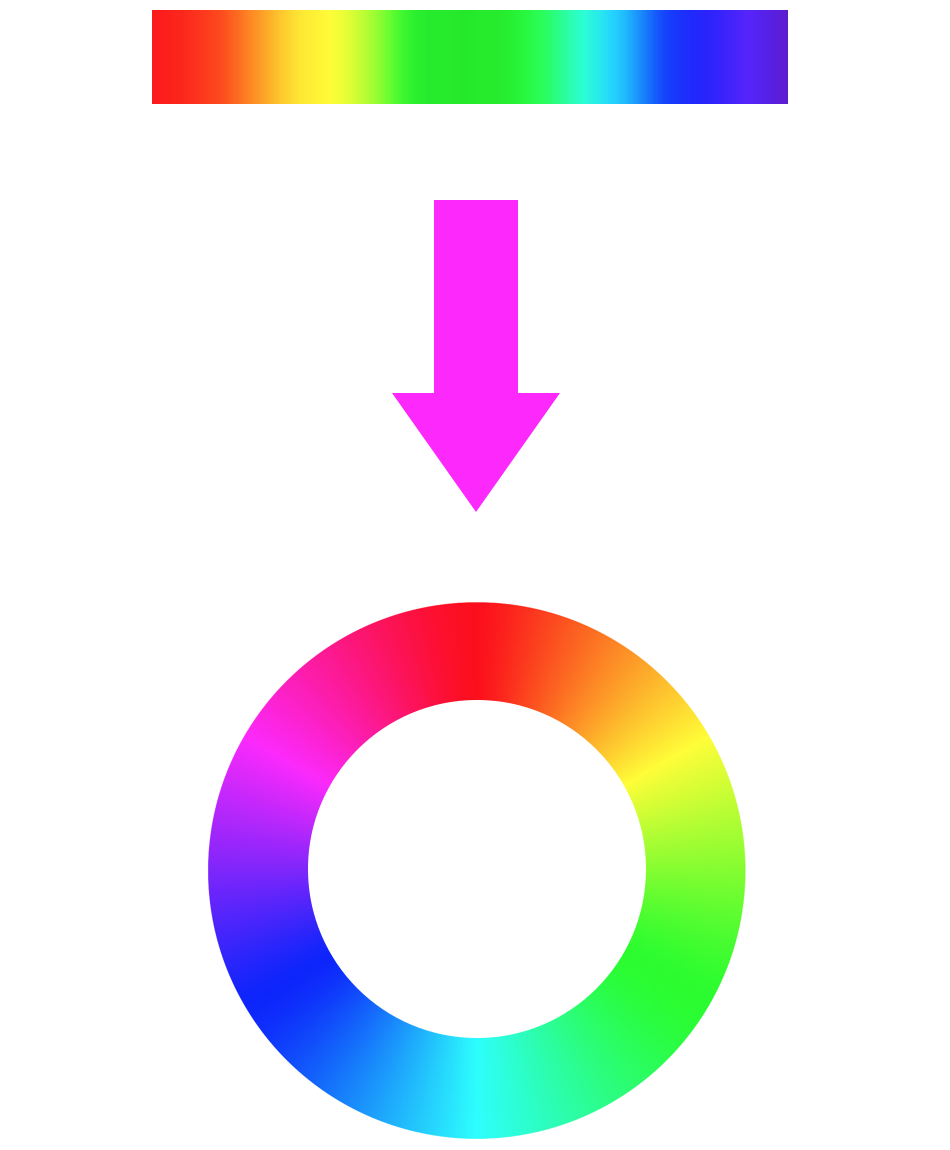
Congratulations!
10 of 10 questions completed
+ ⭐️ collected.
Sign up (for free!) to:
• save your progress 📊
• create constellations✨
• customise your fox! 🦊







